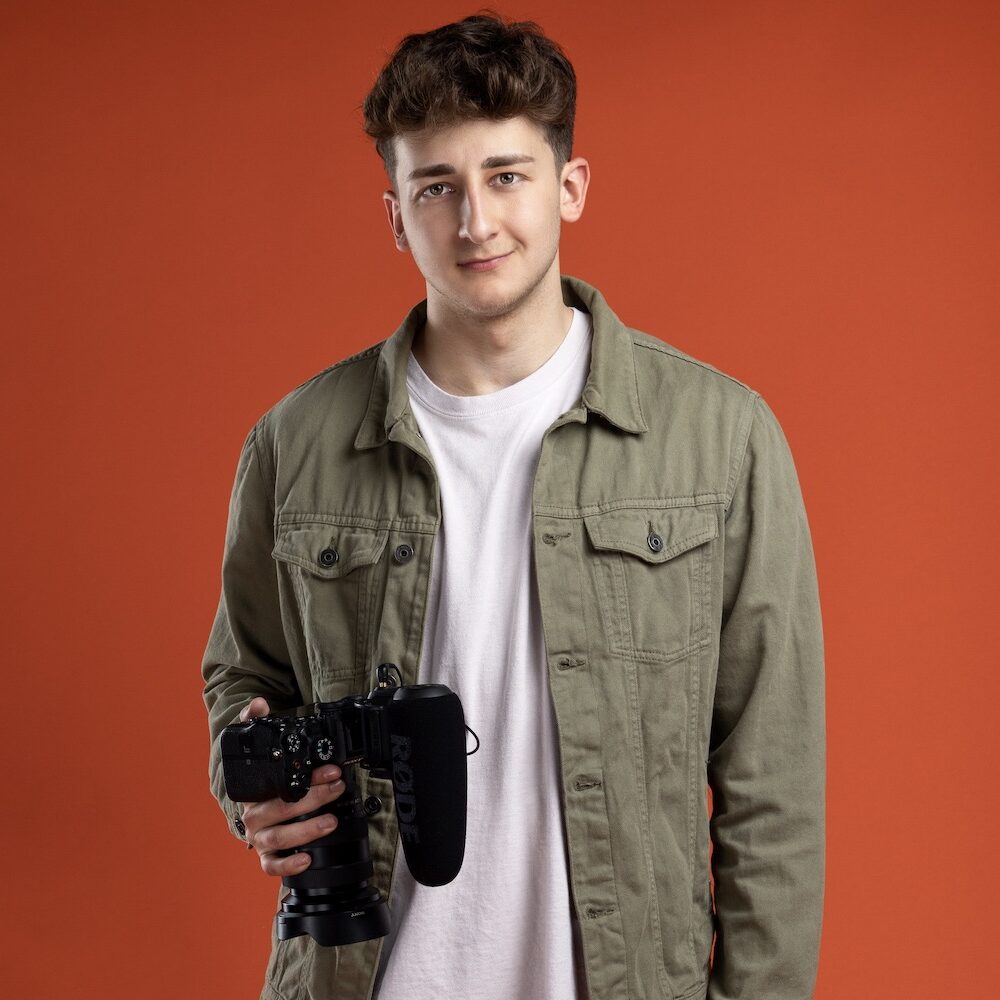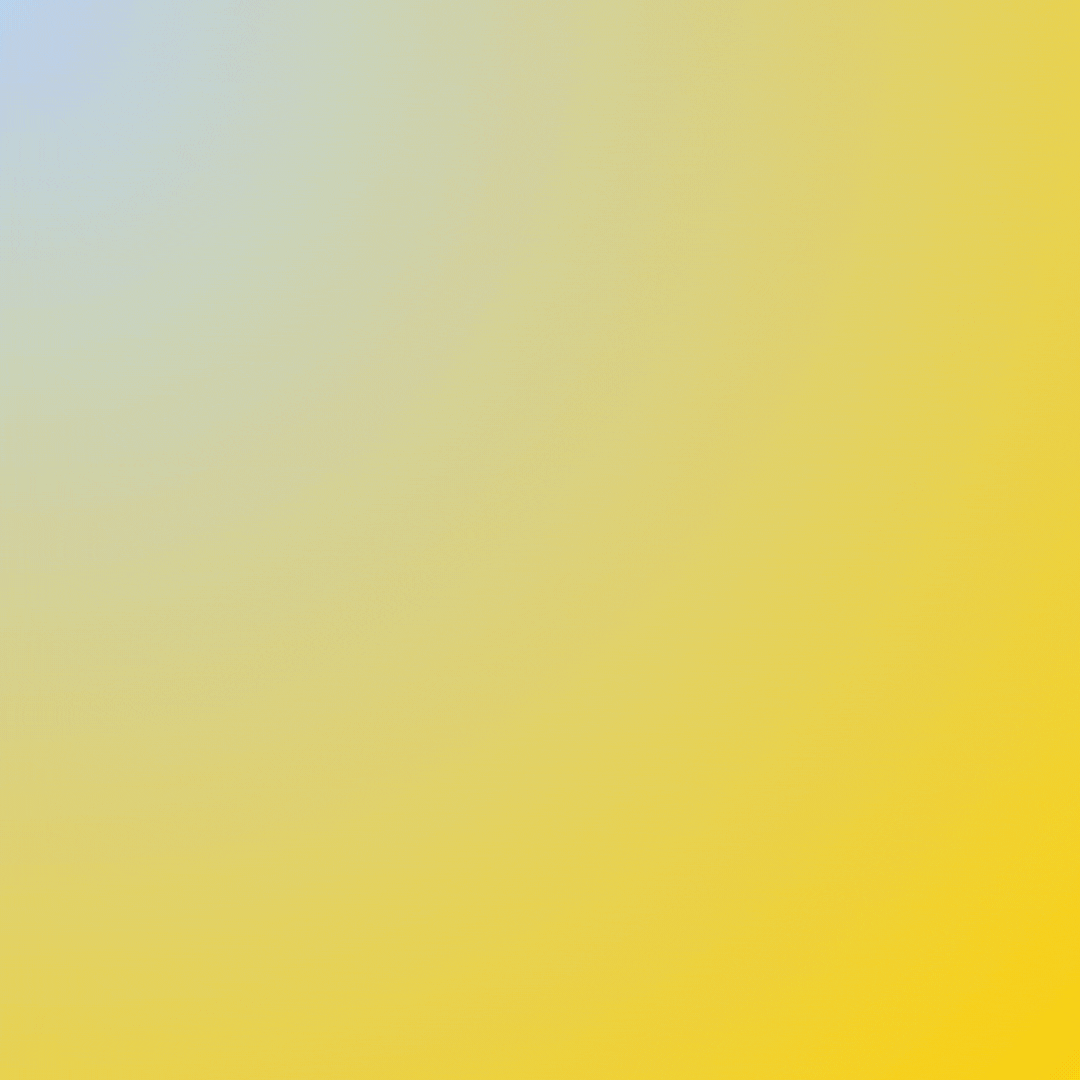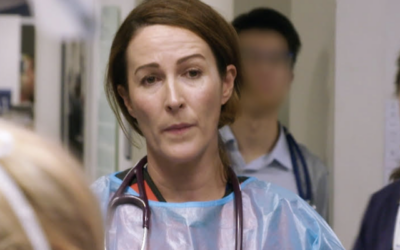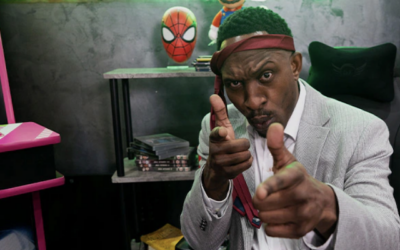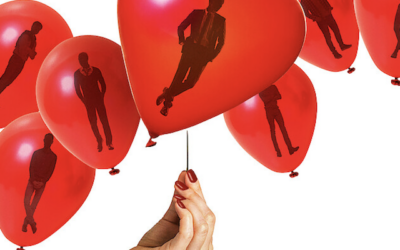Brandon Baum is a 23-year old content creator, better known to his social media fan base as Brandon B. With a total audience of around 9 million followers, Baum has managed to amass more than 5 billion global views in just two years. In late 2022, he established a new independent production business, Studio B, to expand the range of content he produces. Today, across Brandon B and Studio B, Baum and his team are creating a mix of branded content, entertainment programming and talent-led short form content that leans into VFX and virtual production.
This week, Brandon spoke to The Drop about why he prefers working in social media to TV and how he intends to future proof the business with digital-first entertainment formats like This Interview Will Self Destruct. From his North London HQ, he also discussed a range of topics including YouTube Shorts monetisation, building viral content for blue chip brands and the culture of a social first production company.
Your business is effectively based around two streams of content creation – via the Brandon B and Studio B labels. Can you tell us how that works in practice?
BB: Sure. So the Brandon B team is the one that helps me run online pages that are specifically branded as Brandon B – those that feature me in the content. Right now, that means creating content for around 9 million Brandon B followers across platforms like YouTube, TikTok, Instagram and Facebook. Then we have a separate team for Studio B. This team works with brand clients and creates content for people that have nothing to do with Brandon B. It’s a separate entity, with its own projects that don’t have Brandon B’s face being in it. Across the two units, we employ around 15 people.
Let’s look at each unit in turn. So, started by drilling down into Brandon B.
BB: Brandon B has grown around the creation short form content with a strong VFX dimension. This continues to be important and now has a strong branded content dimension to it. But we’re also expanding into long form, doing interviews with talent like rapper Aitch, Jake Gyllenhall and Tom Holland. This comes within the framework of an original format called “This Interview Will Self Destruct.” The core of the format is a celebrity interview that combines scripted comedic skits with a mixture of practical and VFX stunts and focuses on the idea of everything ‘going wrong’. The first episode featured Tom Holland and gained over 180 million views and 20 million likes.
So this format effectively grew out of press junket opportunities?
BB: Yes, we were getting all of these incredible interview opportunities, so we thought – why not use this as an opportunity to come up with an original format idea? We’ve only been operating the show for a few months, but we’ve already got 50,000 followers, so it’s a good example of generating owned IP around the Brandon B audience.
Is that a key part of the future for you? Building formats?
BB: I think every creator out there will be doing something like this over the next five-year period. A lot of creators haven’t started their format hunt yet, but I believe that is the future of social. When I think about the social landscape right now, one of the biggest problems for creators is trying to work out what their next big idea is coming from. Often they are reinventing the wheel every time they decide what type of video to make. TV, by contrast, has built durable IP around long-running formats.
How does the StudioB part of the business fit in?
BB: It emerged organically. On the Brandon B side, we were working with cool brands like Disney/Pixar, Netflix and Warner Bros and they started asking if we could also produce viral content that was centred around their brands without the Brandon B element. So we started to see this need among brands for viral content and jumped into that space with Studio B. Since then, it has grown very naturally with jobs consistently coming in. The beauty of it is that there’s never been a hard sell. There’s just a hungry market for what we’re doing. I’m proud of the fact Studio B is a creator-first production company, where the starting point was understanding social.
When StudioB is working with brands, does it invite them in from the start of the creative process – or does that come at a later stage?
BB: Our starting point is always – how do we create special and magical viral moments? The content has to be authentic if it’s going to engage the digital audience. I think if you bring in a brand from day one, you can lose sight of what you thought was so special about an idea. So right now, we’ve got a slate of ideas we’re in the process of getting fleshed out. We then take them to brand partners that we work with and show them a range of different avenues that they maybe haven’t thought about.
What kind of brands have you worked with?
BB: Across the two sides of the business, we have worked with the likes of Netflix, Adidas, FIFA, Meta, Samsung, Disney/Pixar, Warner Bros and Universal. We did some really interesting work with Adidas around Euro 2020, which involved the likes of Aaron Ramsdale (England and Arsenal) and Declan Rice (England and West Ham). Brands like to get us involved in their social campaigns because we have a better grasp of how to create viral content than traditional production companies.
Is Studio B entirely focused on branded content partnerships?
BB: No, branded content is important but it’s only one part of the business. We’ve also started developing a network of social channels that carry original content. Just like on the Brandon B side, we want to develop our own long form shows – social media’s versions of, say , Love Island, for example. We want to get to the place where we are developing blockbuster social formats that will air once a week. Traditionally, production companies haven’t really operated in both spaces. But within the social landscape, the lines are completely blurred. The modern era of marketing is much more about brands that are likeable and have fun with their audiences. So the two sides work well together. I also think there is strength in having different strands across short form and long form. If some of our audience start losing interest in our short form content then maybe they will migrate to some of the longer formats we are creating.
What trends do you see across the various social media platforms?
BB: I definitely think the platforms are converging more – because they’re all chasing the same audience. We’re reached a point where you can create one major social asset and look to adapt it for every platform. If you create a long form video for YouTube, then afterwards you can cut it up into shorter clips for YouTube Shorts, TikTok or Reels. Of course, for creators it means to have to understand how to optimise content correctly so that it engages fans across all the platforms.
Which platforms are the most critical for you when creating content?
BB: For me, it’s YouTube. I think it’s an incredible platform. I’m excited to see all the fresh new ideas that come to the table. I think they have adapted to the short form landscape well. TikTok is more complicated. They are experiencing a lot of turmoil at the moment. I have full faith they will sort it out, but for me YouTube is number one. In addition, we spend a lot of time scanning the various platforms for opportunities. Snapchat has been a good platform for us recently, because it’s undervalued by a lot of creators. We’ve done a range of shows for Snapchat including a top 10 show. We’ve found that there are lot of brands on the platform and we can get good conversions.
How have you found YouTube Shorts monetisation so far?
YouTube Shorts monetisation isn’t great yet, but where YouTube is great is reach. They are delivering some of the most substantial reach that I’ve ever seen on social media platforms. We might do 30 million views a month on TikTok, whereas YouTube will give us around 250 million views, with more or less the same content. So even though YouTube isn’t paying creators very well in cash, they are providing exposure.
How does your business model work? Where do revenues come from?
At the moment it’s roughly a 50-50 split between Studio B and Brandon B. Revenue mainly comes brand collaborations, product placements, and social campaigns.
What do you look for when you’re hiring people?
BB: The people that work here are obsessive about the things they love. I’m a real geek about the things I love and seeing other people with the same drive and passion for their areas of interest ignites me. The team here are brilliant at fusing these passion points with what we try to do at Studio B. So I think it’s really important that anyone who joins us has that passion and is enthusiastic about what we are doing. Combining the two drives us to make bigger and better and cooler content.
One of your passion points has always been VFX. Is that still an important part of the DNA and content creation process across the company?
BB: It’s incredible how much the media relies on VFX these days. If you watch any film in the cinema, you won’t find many that have used less than 100 VFX shots. And I think that’s going to continue to scale across all aspects of media. In terms of social, I think our understanding of VFX puts us ahead of a lot of other creators in the market. We’re going all in on this technology, and expanding our capabilities in virtual production. I don’t know anyone else who is using virtual production in social media, so I think we’re definitely among the first creators using it to create social content.
Where do your staff come from? Are any of them former TV executives?
BB: A couple of people here came out of the TV world with me into the social space. I love TV in the sense that it is such an optimised process. Everything in TV has been tried and tested a million times. But I have a problem with the content because it’s not up to date enough for it to be engaging for Gen Z. So I love bringing people in from TV for the process, but they need to train from start in terms of understanding social audiences. If they do cross over, they need to be obsessed with the social space. I’ve never dreamt of working in TV, it does nothing for me. I grew up watching YouTubers. So I’m looking for hungry people like that, who want to be in the YouTube space more than anything. If I’m in an interview with someone and they tell me they want to be making a movie or working in TV in five years, the interview is over straightaway. I’m looking for people who don’t see social as a stopgap or a stepping stone.
How would you summarise the difference between working in TV and social?
BB: Working in social is faster. We are constantly looking for new ideas. If someone has a cool idea over the weekend, we could be shooting it on Monday morning. People in social also get more of a say and the structure is less corporate. Everyone from runners to writers to editors to VFX artists are all in the room and they all have ideas that we listen to. Creativity is spewed out right across our team and it means you can work through the ranks faster. Before you know it, you’re in charge of shoots.
So how busy are you? What’s the typical workload at the studio?
BB: We are probably doing about five or six shoots a week. Not that we’re shooting every day. Some days there are multiple shoots going on.
What’s next for you in terms of growth?
The focus for the next couple of years will be growing IP. Our brand development team creates original ideas and then we see what sticks with the audience. This business is completely a volume game. Any ideas that cross the million follower mark will then get their own team to work on it. Once an idea or format has gained scale, it’s all about creating business models and brand partnerships to support its progress.
What would you say are the key challenges facing you?
BB: Overall, we’re thriving. We’re ahead of business targets and have this incredible buzzing production hub and team in Northwest London. Probably the biggest challenge is finding the right talent and making sure we scale at the right speed. If we take someone on, there has to be enough revenue to support that hire. But we’re just looking to hire two more people, which shows the growth curve we’re on.

